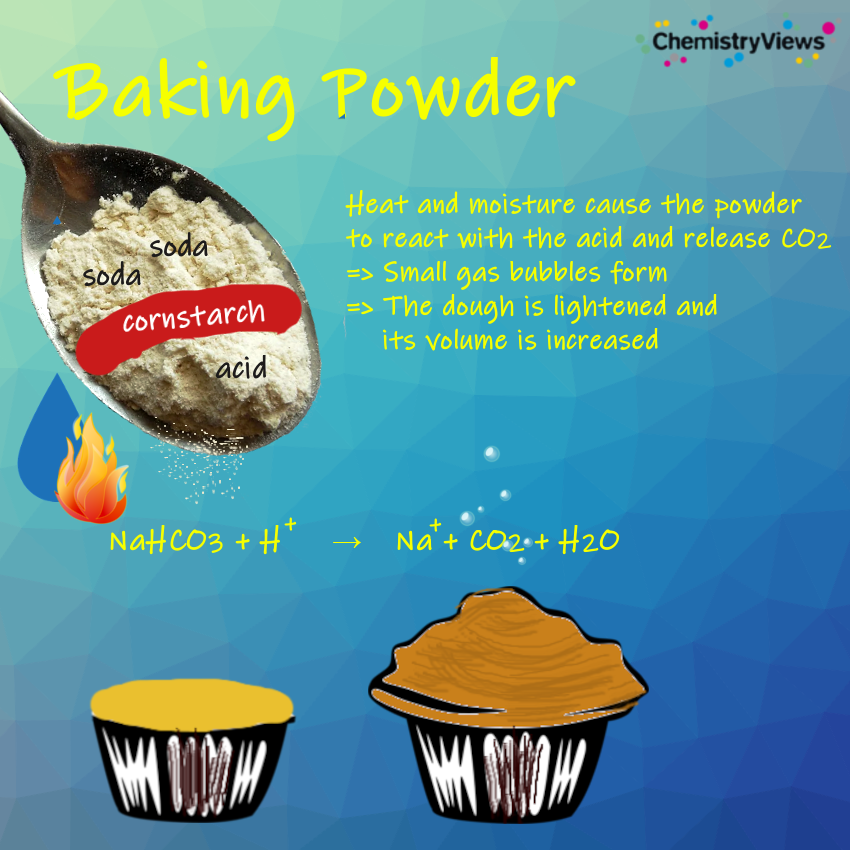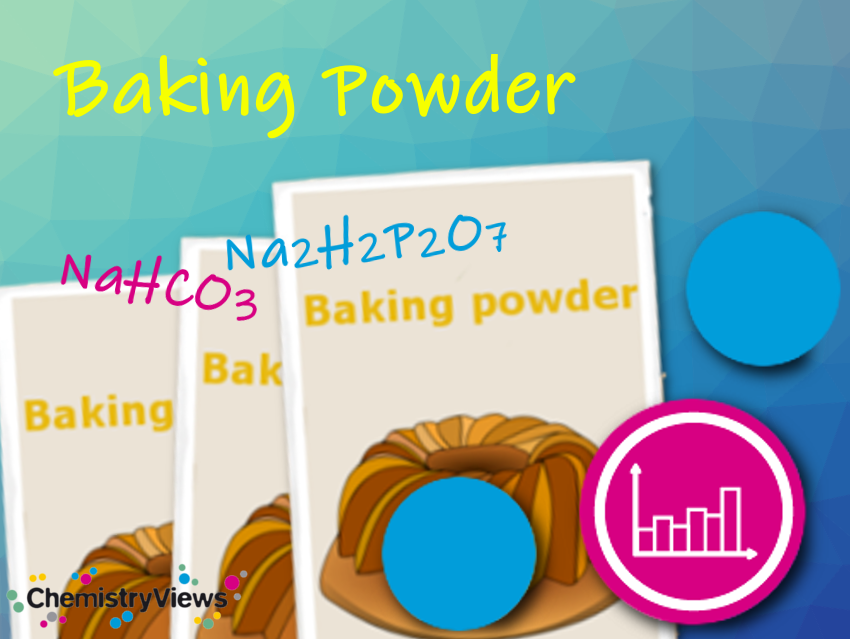We know baking powder as raising agent from the kitchen, and in this Clever Picture we want to take a closer look at how it works and how it was developed.

Baking powders containing potassium bitartrate (aka tartaric acid or cream of tartar) release CO2 at room temperature (fast-acting). The dough must be baked immediately, otherwise, too much gas is lost. Slow-reacting baking powders contain phosphates, from which part of the gas escapes at room temperature and another part during baking.
Double-acting baking powders contain two acidic components to increase the reliability by rendering the time elapsed between mixing and baking less critical. They work in two phases; once when cold, and once when hot. This is the type of baking powder most widely available to consumers today.
Baking powder shortens the preparation time compared to yeast or sourdough, as yeast fungi and bacteria need more time to produce CO2. However, the types of dough differ considerably in taste and consistency.
.png)
Dr. Oetker Baking Powder is still sold, currently its ingredients are listed as sodium acid pyrophosphate (Na2H2P2O7; E450), sodium bicarbonate (NaHCO3; E500), and corn starch.
Moisture and heat can cause baking powder to lose its effectiveness over time. Therefore, commercial baking powders have an expiration date printed on the packaging. Regardless of this date, effectiveness can be tested by placing some powder in a small container of hot water. If it bubbles vigorously, it is still active and usable.
Baking powder is a household remedy for many things. Together with water it is, for example, used to clean burnt pots.
References
- Unsere Geschichte, Dr. Oetker, Bielefeld, Germany. (Retrieved November 24, 2020)
- Andreas Beckmann, Janina Langer, Chemie im Haushalt, Westfälische Wilhelms-Universität Münster, 2007.
- Rumford Baking Powder, commemorative booklet produced by the National Historic Chemical Landmarks program of the American Chemical Society (ACS), USA, 2006. (Retrieved November 24, 2020)
Also of Interest
-
- Chemistry Advent Calendar 2020
ChemistryViews 2020.
Daily highlights from the chemistry of spices - Video: CO2 Extinguishes Candle,
ChemistryViews 2019.
Another use of baking powder
https:/doi.org/10.1002/chemv.201900140
- Chemistry Advent Calendar 2020




